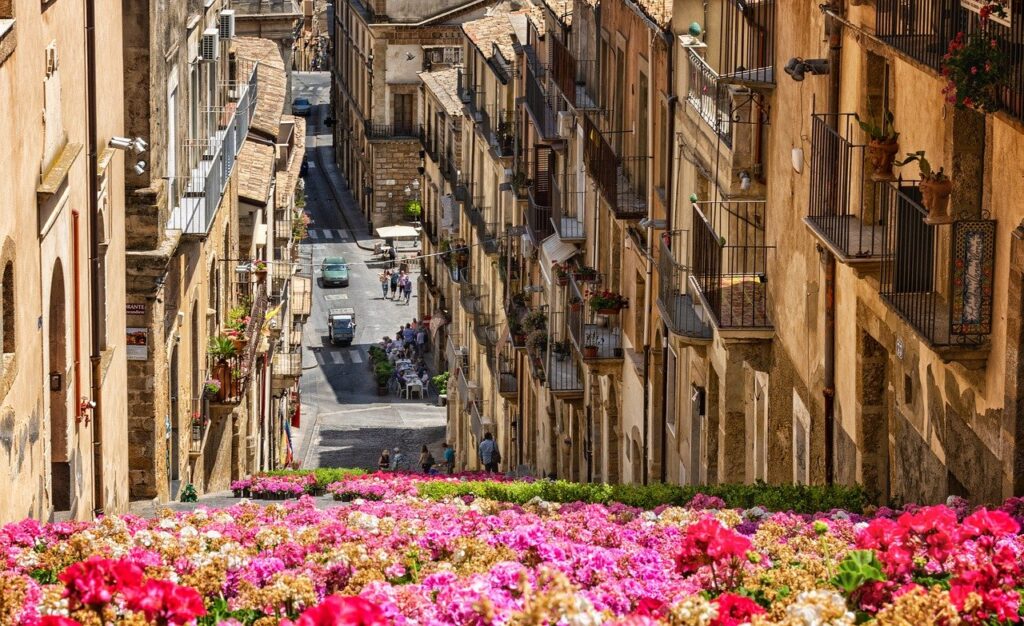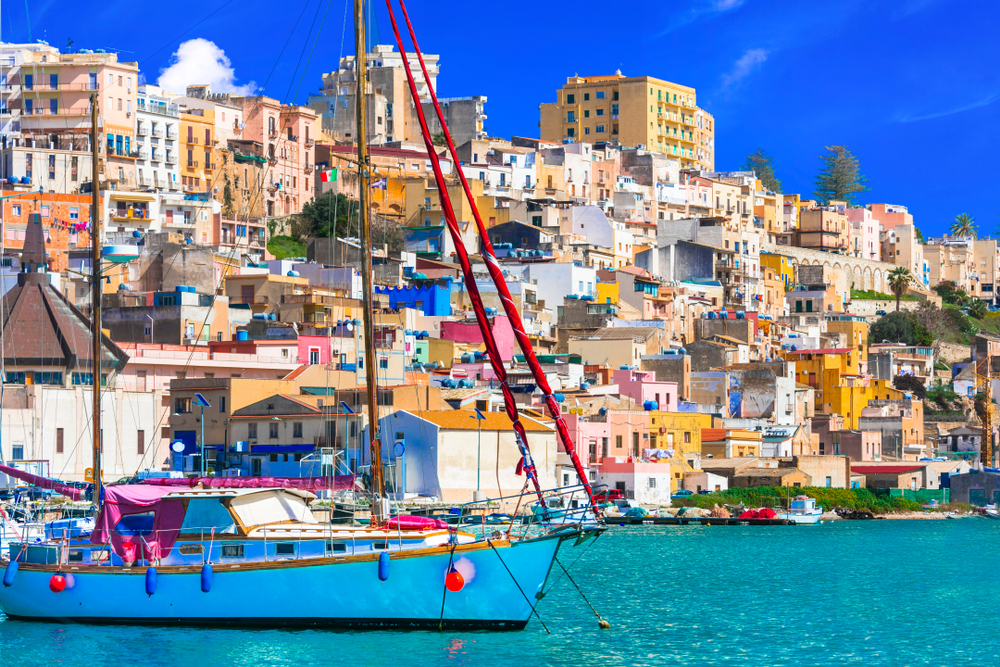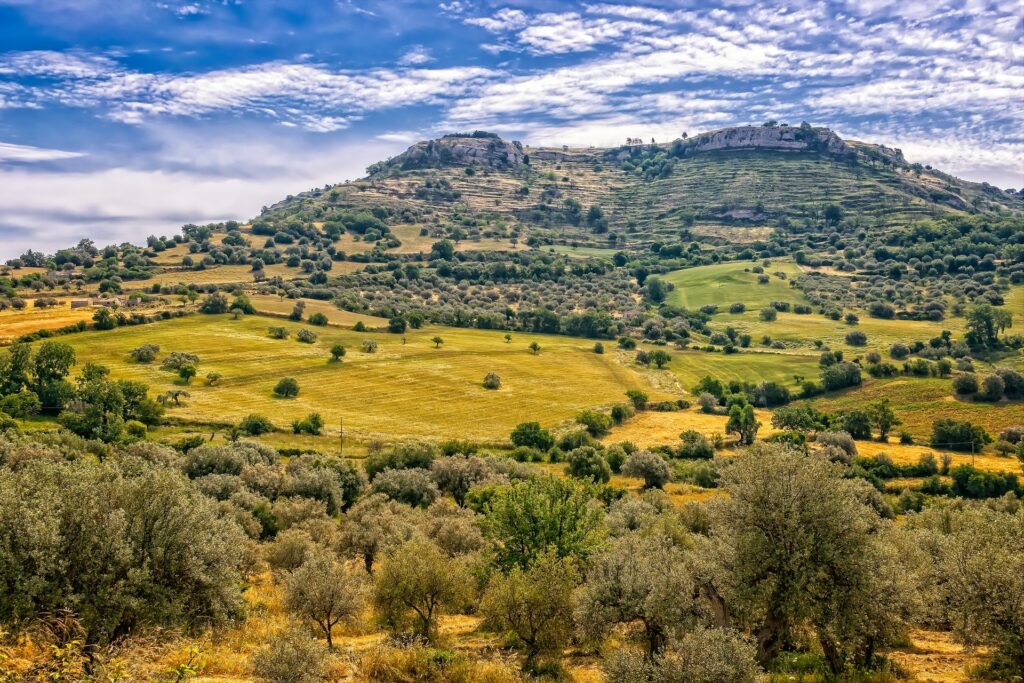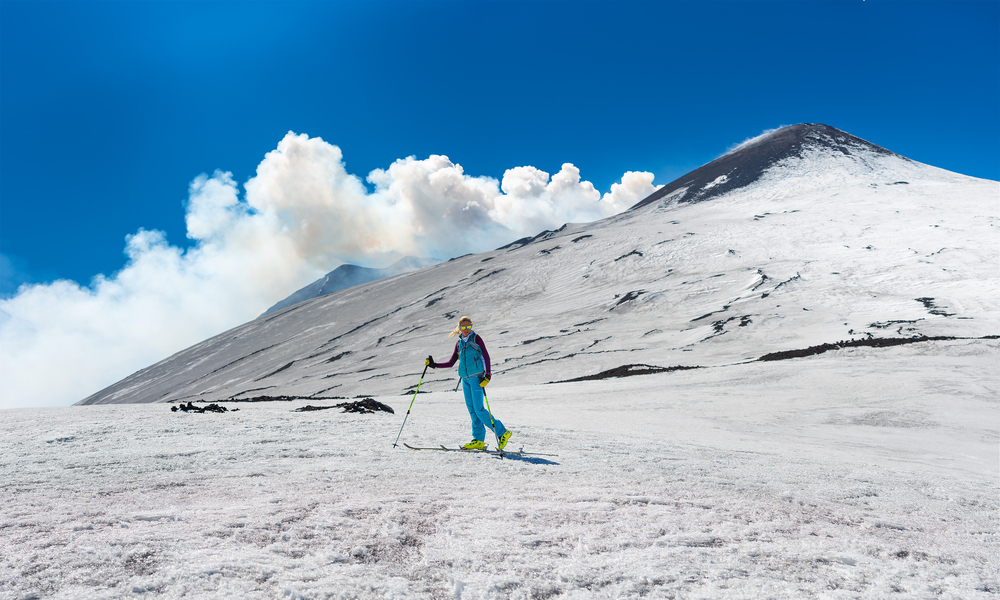The Best Time to Visit Sicily
The largest island in the Mediterranean Sea, Sicily is also the largest of Italy’s many islands and the largest of its 20 administrative regions. Located just off the toe of Italy’s ‘boot’, it’s probably most famous for being home to Mount Etna, which at around 350,000 years old is probably the oldest active volcano in the world. However, it’s also where you will discover the remains of a fascinating mix of cultures, from the ancient Greeks and Romans to the Arabs. It’s also an incredibly popular place in Italy for a holiday thanks to its beautiful beaches and stunning coastline, its plethora of UNESCO World Heritage sites, its stunning inland scenery and delicious food and wine.
So, what is the best time to visit Sicily? Can’t decide whether to visit Sicily in August or Sicily in December? Then take a read of what to expect during each season in Sicily to find when is the best time for you to holiday in Sicily.
Sicily in the Spring

We think Spring is a wonderful time to visit Sicily. Certainly, plenty of people agree with us, with holidaymakers flocking to the island to make the most of the warm temperatures (average temperatures across these months are in the low twenties). The average high temperature in March is 18.6 Celsius, quickly climbing to 26.8°C in May. You’ll find people enjoying the beaches during these months as sea temperatures start to rise but you’ll also find people making the most of all the other things to see and do in Sicily before it gets too hot. This is the time to go hiking on Mount Etna, to explore the incredible ancient remains and to go sightseeing in Sicily’s towns and cities.
It’s also an incredibly beautiful time to holiday in Sicily with the island covered with an array of brightly coloured wildflowers. One of our favourite festivals in Sicily takes place in May when the streets of Noto are literally carpeted with a blanket of flowers. With the continued importance of the Roman Catholic religion in Sicily, the island plays also host to a number of important religious celebrations in the Spring. During Holy Week, the most famous of these is the Good Friday procession in Enna when over 2000 friars parade through the streets of the city, whilst in Trapani there is the Processione dei Misteri.
Sicily in the Summer

If you like the heat, then consider heading to Sicily in the Summer months. July and August are the hottest months in Sicily when day time temperatures can soar above 30°C and night time temperatures can be in the early twenties. Whilst this heat is perfect for lazy days spent lying on the beach, you could well find that it’s just too hot to spend time exploring the sights of Sicily. Check out some of our favourite beaches in Sicily at San Vito Lo Capo, Isola Bella, Scala dei Turchi as well as the Torre Salsa Nature Reserve Beach.
That said, one of our favourite Sicilian foods is granita, a refreshing and cooling treat made of flakes of ice blended with fruits, coffee or nuts which can be enjoyed any time of the day (including at breakfast). The high temperatures give you plenty of excuses to try all the flavours on offer! Not to mention all the gelato you can savour too! And there is more reason to enjoy some gelato in Sicily than anywhere else in Italy as many argue that ice cream was actually invented on the island!
And, with a need to keep cool, Summer is the best time of the year to explore the seas that surround Sicily too. With over 1000 km of coastline, it’s not a surprising that there are a wealth of activities on offer off shore, from scuba diving to water skiing and from canoeing to kite surfing. There are also a number of good diving spots to choose from, including a number at the Zingaro Nature Reserve. And, on land, there are a number of great water sports centres where you can always keep cool from the soaring Summer temperatures.
Sicily in the Autumn

After the Spring, the second most popular time to visit Sicily is in the early autumn. Just like in May and June, September offers holidaymakers pleasant temperatures in the mid-twenties with plenty of sunshine to be enjoyed and with evenings warm enough to still dine outside on restaurant terraces.
And the Autumn is a great time to visit Sicily if you’re a keen foodie too. Pistachios are just one of the many foodstuffs harvested in September in Sicily and every October in the town of Bronte near Mount Etna, an Italian sagra celebrates the humble pistachio when a variety of pistachio inspired dishes are on hand for visitors to taste. For a different kind of food festival, head instead to the seaside town of San Vito Lo Capo at the end of September when you’ll discover a 5 day culinary festival celebrating couscous and recognising the Arab influences on Sicilian cuisine. And the following month in October, the olive harvest also begins.
The Autumn is also a great time for wine lovers to visit Sicily. In September there is the Sagra dell’ Uva (Festival of the grapes) in a number of towns in Sicily including Vallelunga, Roccazzo, Gulfi, Ragusa and Chiaramonte, followed in November by the Festa di San Martino, a Saints Day that is celebrated in many towns and villages by a sampling of the year’s new wine.
Sicily in the Winter

We actually think there are many places to holiday in Italy in the Winter months, when you’ll find tourist numbers are fewer and you can escape the normal crowds and queues throughout the country. Certainly, the Winter months are a great time to visit Italy’s main cities. But arguably none of Italy’s regions are as fun to visit in the Winter months as Sicily.
Despite lying just 100 miles north of Tunisia in Northern Africa, average day time temperatures in Sicily will drop down to around 12 or 13 degrees centigrade across the Winter months so don’t expect to be sunbathing in Sicily at this time! Far from it. You’ll need a warm jacket and even a pair of gloves on some days. But cold spells in Sicily usually don’t last long and, along the Sicilian coast, record low temperatures are only around 0°C (32 °F) whilst snow showers are rare in Palermo and Messina on the north coast and pretty much non existent on the south coast. All this means sightseeing can be enjoyed without having to battle the stifling temperatures of the Sicilian Summer and there is certainly plenty to get involved in.
8 December is the feast day of the Immacolata, marking the official start to Christmas in Sicily, after which every a plethora of towns will have festive markets, nativity scenes and decorations to enjoy, accompanied by the sound of the traditional zampogna bagpipes and piano accordians. At the other end of the winter, February is carnival month and there are a whole host of carnivale to be enjoyed, the most famous of which are the celebrations in Acireale. The Festival of Saint Agata also takes place in February, whilst throughout the winter there are plenty of food festivals (sagra) to enjoy focused on citrus fruits, mulled wine, chocolate, nuts and salami.
However, it’s a different story in the hills inland where snow is a little more frequent and in the more mountainous areas of Sicily where it can even be quite abundant. But this means that holidaymakers visiting Sicily in the winter can also spend time skiing. Many holidaymakers aren’t even aware that Sicily actually has ski resorts but, in fact, there are two main resorts on Mount Etna – Piano Provenzana – Linguaglossa on the north where there are 5 pistes and Nicolosi on the south where there is one piste. Both offer both alpine and downhill slopes. Good skiing is possible from November through to the end of March.
Get in touch today to find out more about the best time to visit Sicily or to book one of our villas in Sicily.


